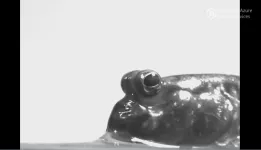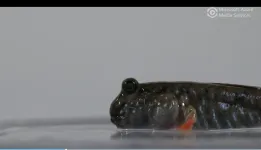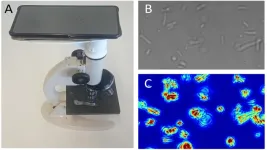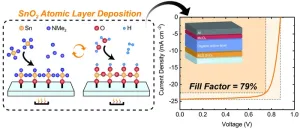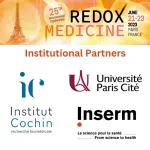(Press-News.org) Medication delivered by a novel gel cured 100% of mice with an aggressive brain cancer, a striking result that offers new hope for patients diagnosed with glioblastoma, one of the deadliest and most common brain tumors in humans.
“Despite recent technological advancements, there is a dire need for new treatment strategies,” said Honggang Cui, a Johns Hopkins University chemical and biomolecular engineer who led the research. “We think this hydrogel will be the future and will supplement current treatments for brain cancer.”
Cui’s team combined an anticancer drug and an antibody in a solution that self-assembles into a gel to fill the tiny grooves left after a brain tumor is surgically removed. The gel can reach areas that surgery might miss and current drugs struggle to reach to kill lingering cancer cells and suppress tumor growth. The results are published today in Proceedings of the National Academy of Sciences.
The gel also seems to trigger an immune response that a mouse’s body struggles to activate on its own when fighting glioblastoma. When the researchers rechallenged surviving mice with a new glioblastoma tumor, their immune systems alone beat the cancer without additional medication. The gel appears to not only fend off cancer but help rewire the immune system to discourage recurrence with immunological memory, researchers said.
Still, surgery is essential for this approach, the researchers said. Applying the gel directly in the brain without surgical removal of the tumor resulted in a 50% survival rate.
“The surgery likely alleviates some of that pressure and allows more time for the gel to activate the immune system to fight the cancer cells,” Cui said.
The gel solution consists of nano-sized filaments made with paclitaxel, an FDA-approved drug for breast, lung, and other cancers. The filaments provide a vehicle to deliver an antibody called aCD47. By blanketing the tumor cavity evenly, the gel releases medication steadily over several weeks, and its active ingredients remain close to the injection site.
By using that specific antibody, the team is trying to overcome one of the toughest hurdles in glioblastoma research. It targets macrophages, a type of cell that sometimes supports immunity but other times protects cancer cells, allowing aggressive tumor growth.
One of the go-to therapies for glioblastoma is a wafer co-developed by a team of researchers at Johns Hopkins and the Massachusetts Institute of Technology in the 1990s, commercially known as Gliadel. It is an FDA-approved, biodegradable polymer that also delivers medication into the brain after surgical tumor removal.
Gliadel showed significant survival rates in laboratory experiments, but the results achieved with the new gel are some of the most impressive the Johns Hopkins team has seen, said Betty Tyler, a co-author and associate professor of neurosurgery at the Johns Hopkins School of Medicine who played a pivotal role in the development of Gliadel.
“We don’t usually see 100% survival in mouse models of this disease,” Tyler said. “Thinking that there is potential for this new hydrogel combination to change that survival curve for glioblastoma patients is very exciting.”
The new gel offers hope for future glioblastoma treatment because it integrates anticancer drugs and antibodies, a combination of therapies researchers say is difficult to administer simultaneously because of the molecular composition of the ingredients.
“This hydrogel combines both chemotherapy and immunotherapy intracranially,” Tyler said. “The gel is implanted at the time of tumor resection, which makes it work really well.”
Johns Hopkins co-author Henry Brem, who co-developed Gliadel in addition to other brain tumor therapies currently in clinical trials, emphasized the challenge of translating the gel’s results in the lab into therapies with substantial clinical impacts.
“The challenge to us now is to transfer an exciting laboratory phenomenon to clinical trials,” said Brem, who is neurosurgeon-in-chief at Johns Hopkins Hospital.
Other Johns Hopkins authors are Feihu Wang, Qian Huang, Hao Su, Mingjiao Sun, Zeyu Wang, Ziqi Chen, Mengzhen Zheng, Rami W. Chakroun, Maya K. Monroe, Daiqing Chen, Zongyuan Wang, Noah Gorelick, Riccardo Serra, Han Wang, Yun Guan, Jung Soo Suk, and Justin Hanes.
END
This gel stops brain tumors in mice. Could it offer hope for humans?
2023-04-24
ELSE PRESS RELEASES FROM THIS DATE:
New tools capture economic benefit of restoring urban streams
2023-04-24
An interdisciplinary team of researchers has developed a suite of tools to estimate the total economic value of improving water quality in urban streams. The work can assist federal and state agencies charged with developing environmental regulations affecting urban ecosystems across the Piedmont Region of the United States, which stretches from Maryland to Alabama.
“Urban streams are ubiquitous and face a number of stressors from rapid economic development,” says Roger von Haefen, professor of agricultural and resource economics at North Carolina State University and corresponding ...
A blinking fish reveals clues as to how our ancestors evolved from water to land
2023-04-24
UNIVERSITY PARK, Pa. — An unusual blinking fish, the mudskipper, spends much of the day out of the water and is providing clues as to how and why blinking might have evolved during the transition to life on land in our own ancestors. New research shows that these amphibious fish have evolved a blinking behavior that serves many of the same purposes of our blinking. The results suggest that blinking may be among the suite of traits that evolved to allow the transition to life on land in tetrapods — the group of animals that includes mammals, birds, reptiles and amphibians — some 375 million years ago.
The study appears the week ...
New machine-learning method predicts body clock timing to improve sleep and health decisions
2023-04-24
A new machine-learning method could help us gauge the time of our internal body clock, helping us all make better health decisions, including when and how long to sleep.
The research, which has been conducted by the University of Surrey and the University of Groningen, used a machine learning programme to analyse metabolites in blood to predict the time of our internal circadian timing system.
To date the standard method to determine the timing of the circadian system is to measure the timing of our ...
Health surveys, studies exclude trans people and gender-diverse communities, impacting health care
2023-04-24
ANN ARBOR—Health surveys and clinical studies have a data collection problem: Because of the way they record sex or gender, they often exclude transgender and gender-diverse people, according to University of Michigan research.
Most studies and surveys either ask participants for their sex, a biological construct, or their gender, a social construct. In this way, they only consider either sex or gender independently or use the two concepts interchangeably, says Kate Duchowny, a research assistant professor in the Survey Research Center at the U-M Institute for Social Research.
Participants either respond with their sex assigned at birth or the ...
Scientists detect seismic waves traveling through Martian core for the first time
2023-04-24
Scientists observed seismic waves traveling through Mars’ core for the first time and confirmed model predictions of the core’s composition.
An international research team—which included University of Maryland seismologists—used seismic data acquired by the NASA InSight lander to directly measure properties of Mars’s core, finding a completely liquid iron-alloy core with high percentages of sulfur and oxygen. Published in the Proceedings of the National Academy of Sciences on April 24, 2023, these findings reveal new insights into how Mars formed and geological differences ...
Pioneering research sheds new light on the origins and composition of planet Mars
2023-04-24
A new study has uncovered intriguing insights into the liquid core at the centre of Mars, furthering understanding of the planet’s formation and evolution.
The research, led by the University of Bristol and published in the journal Proceedings of the National Academy of Sciences of the US, reveals the first-ever detections of sound waves travelling into the Martian core. Measurements from this acoustic energy, called seismic waves, indicate its liquid core is slightly denser and smaller than previously thought, and comprises a mixture of iron and numerous other elements.
The ...
Testing antibiotic resistance with a fast, cheap, and easy method
2023-04-24
“We have developed a technique in our laboratories that allows us to obtain an antibiogram within 2-4 hours – instead of the current 24 hours for the most common germs and one month for tuberculosis,” says Dr Sandor Kasas at EPFL. Professor Ronnie Willaert at Vrije Universiteit Brussel adds: “Our technique is not only faster but also simpler and much cheaper than all those existing now.”
Antibiotic resistance happens when bacteria develop the ability to defeat the drugs designed to kill them. It ...
Interfering with antiviral pathway may deter Alzheimer’s disease and frontotemporal dementia
2023-04-24
Targeting part of an antiviral pathway triggered by the accumulation of a key pathogen shared in Alzheimer’s disease and frontotemporal dementia may one day offer a new therapeutic approach to deterring or delaying cognitive decline, according to preclinical research led by Weill Cornell Medicine scientists.
The study, published April 24 in Nature Neuroscience, demonstrates that inhibiting an innate immune system enzyme called cyclic GMP–AMP synthase (cGAS) helps neurons become resilient to the build-up of the protein tau into bundles known as fibrils, a hallmark of Alzheimer’s and some forms of frontotemporal dementia, the two most ...
Outstanding performance of organic solar cell using tin oxide
2023-04-24
Organic solar cells have a photoactive layer that is made from polymers and small molecules. The cells are very thin, can be flexible, and are easy to make. However, the efficiency of these cells is still much below that of conventional silicon-based ones. Applied physicists from the University of Groningen have now fabricated an organic solar cell with an efficiency of over 17 percent, which is in the top range for this type of material. It has the advantage of using an unusual device structure that is produced using a scalable technique. The design involves a conductive layer of tin oxide that is grown ...
Redox Medicine 2023: Where is the target?
2023-04-24
The 25th International Conference on Redox Medicine will take place on June 21-23 in Paris. Redox Medicine 2023 will provide a glimpse into the role of redox in tomorrow’s medicine.
What to Expect in Redox Medicine 2023?
Reactive oxygen species (ROS) have been studied for decades, but the results remain controversial. ROS are beneficial to biological mechanisms, acting as signaling molecules and enhancing immune defense. However, they also have harmful effects, such as causing tissue and organ damage.
Dr. Carole Nicco, stated that “The work and results presented at the Redox Medicine Congress will give ...

